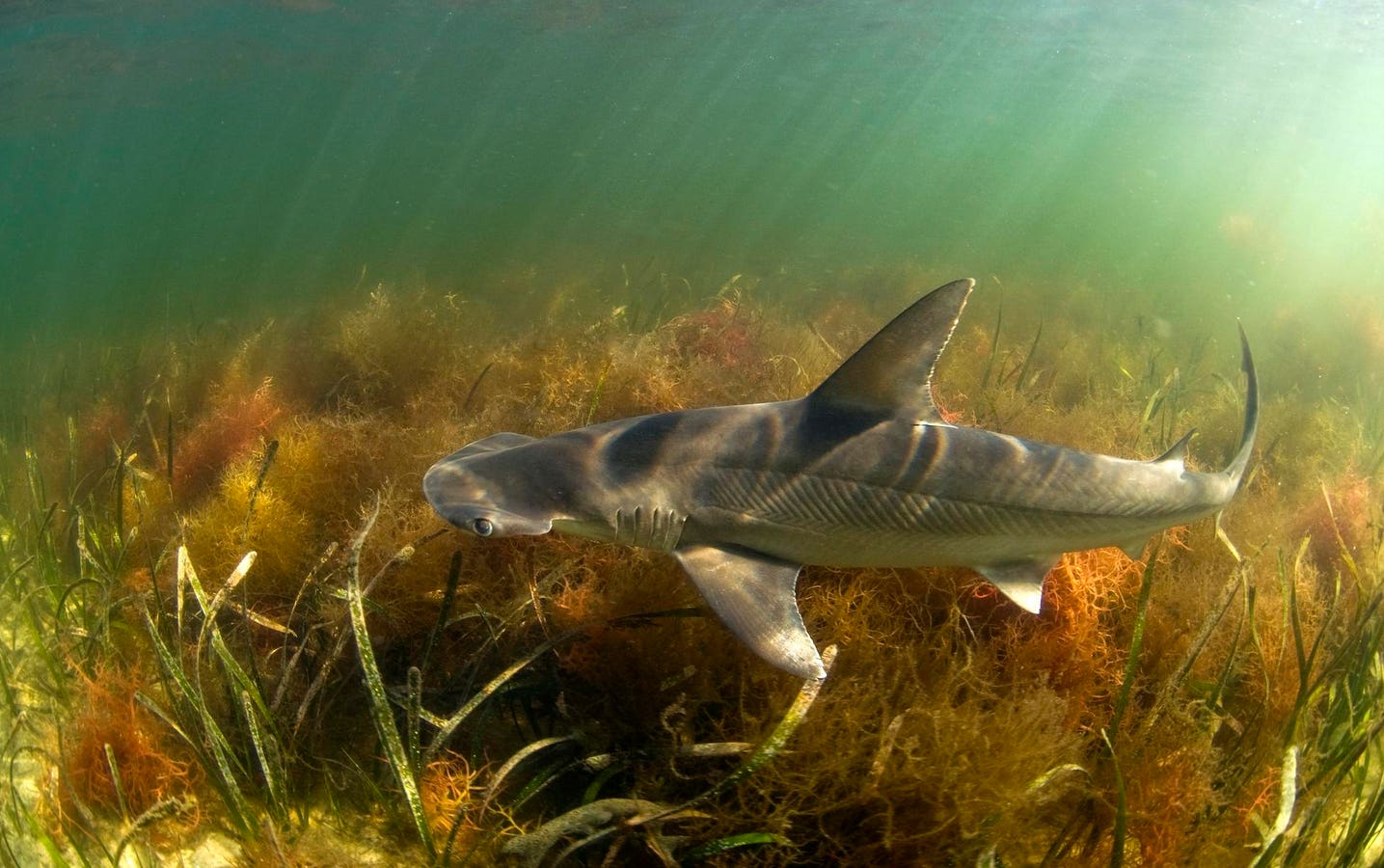
A Rare Glimpse Into The Womb Of Hammerhead Sharks
Bonnethead Shark in the shallows of Pine Island Sound, Florida
getty
With its distinctive head shape and elusive nature, hammerheads have long captivated the attention of scientists and imagination of ocean enthusiasts. Yet, despite our fascination with these animals, much about these predators remains a secret. This is particularly true of the early stages of their lives, leaving researchers yearning to learn more about their embryonic development. Many species of sharks lay eggs, offering scientists a front-row seat to observe the miracle of life unfolding in real time. But not the hammerhead – instead they gestate their pups internally. A female hammerhead shark will nurture up to 16 embryos during her pregnancy, each tethered to her by an umbilical cord reminiscent of our own.
Wouldn’t it be incredible to peer into the womb of this shark to see its journey from embryo to fully formed pup?
Well, thanks to graduate student Steven Byrum of the University of Florida, we have now been able to document the entire set of developmental stages using a total of 177 bonnethead shark embryos. Salvaging embryos from adult female sharks captured off the coasts of Florida, the team has presented the first comprehensive embryonic staging series for the bonnethead, a viviparous hammerhead shark species. “Usually these sharks are tagged and released. But a small number die during this process and are then studied for insights about diet, age, growth, reproduction and toxicology,” says Gareth J. Fraser, Associate Professor of Evolutionary Developmental Biology at the University of Florida. “No sharks were sacrificed just for our study. The embryos would have otherwise been wasted when the mothers died.”
With precision and care, embryos were delicately extracted from the uteri, their fragile forms fixed with 4% paraformaldehyde in phosphate buffered saline (PBS) to preserve them for further examination. Utilizing state-of-the-art imaging technology, the embryonic specimens were meticulously documented in dorsal, lateral, and ventral views, revealing the intricate nuances of their development. From the earliest stages, where the embryos bore little resemblance to their iconic parents, to the defining moment when the unmistakable hammerhead shape emerged, the team witnessed nature’s evolutionary masterpiece unfold before their eyes: “Our stage series covers a period of development from stages that match the vertebrate phylotypic period, from Stage 23, through stages of morphological divergence to complete development at birth (Stage 35),” the authors report in their article.
Images of embryos of different ages reveal how the sharks develop in utero.
Steven Byrum and Gareth Fraser, Department of Biology, University of Florida
The significance of this research cannot be overstated. For the first time in scientific history, we have a comprehensive roadmap of hammerhead development, shedding light on the intricate process that gives rise to one of the ocean’s most iconic creatures. But the journey doesn’t end there – understanding hammerhead development offers invaluable insights into the evolution of life itself.
The peculiar shape of the hammerhead’s head, known as a cephalofoil, is more than just a silly quirk of nature. It’s been honed over millennia to enhance the shark’s sensory capabilities and hunting prowess. With eyes positioned wide apart for maximum peripheral vision and expanded nasal capsules attuned to the faintest scent trails, hammerheads possess a sensory arsenal unmatched in the animal kingdom. But perhaps most intriguing are the electric detector organs that adorn their hammer-shaped heads, granting them a sixth sense attuned to the subtlest of electrical signals. “Access to these amazing shark pup embryos allows us to compare their development with other regular-headed sharks and ask how and why hammerheads grow these wonderful noggins,” explained Fraser.
The team believe this research will provide a unique perspective on the possible extreme outcomes and limitations shaping the evolutionary paths of vertebrates, shedding light on why these exceptionally rare phenotypes are seldom observed in the natural world.


